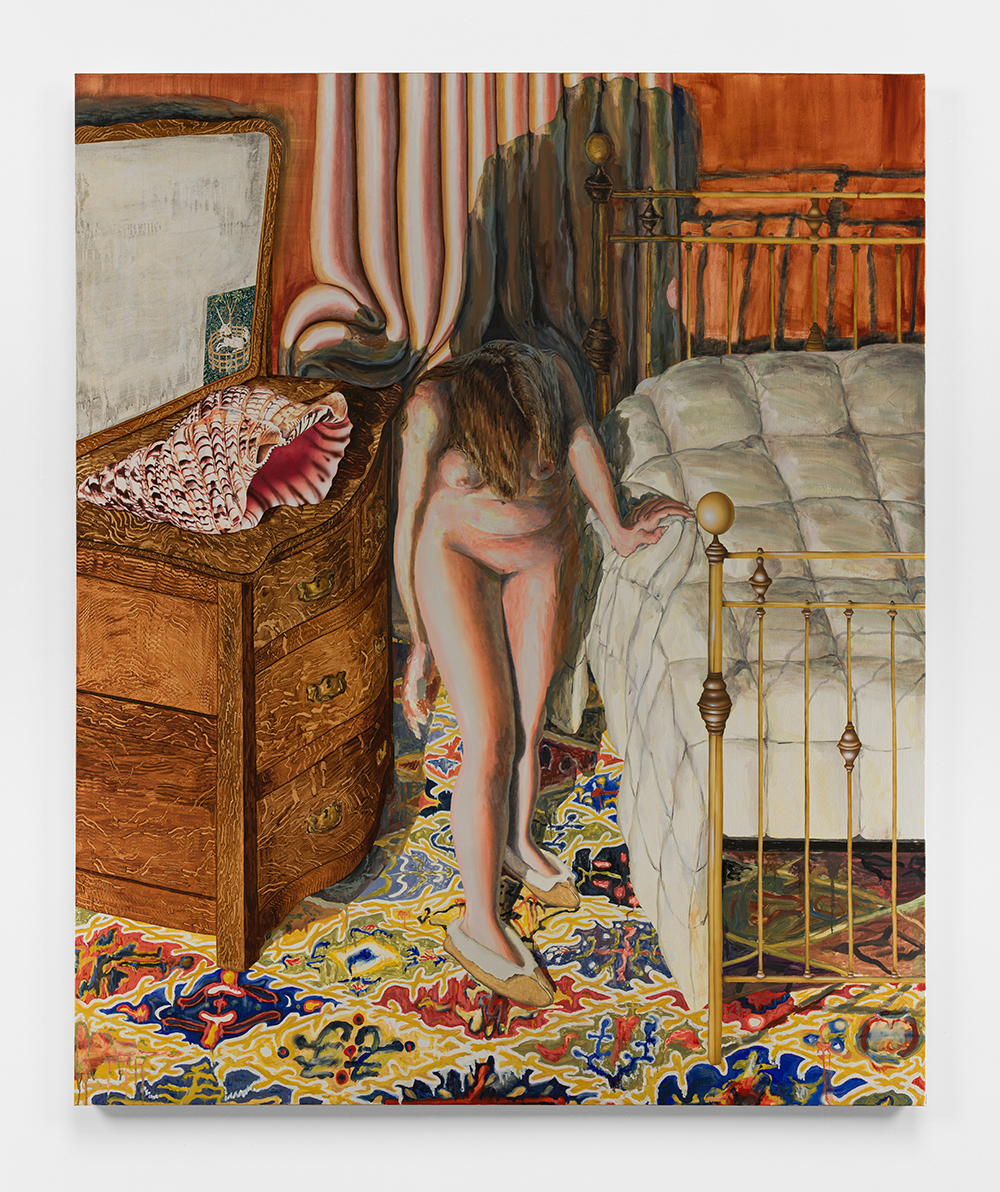Transformation is at the heart of Elizabeth Malaska’s paintings which operate like a story or a fairytale—a mythology of metamorphic processes that disrupt, shape-shift, alter and expand concepts of the self—employing a kind of magical thinking oriented around empathy, care and interconnection (fundamental values in ecofeminist theory). Malaska tells a metamorphic story that raises questions about the soul, agency and kinship as they relate to the ever-shifting dynamics of identity.
Malaska imagines the concept of “the shadow self” in the painting Captive (2022), which depicts a naked woman in a bedroom, her head sharply downturned and her spine hunched, concealing her face with her hair as it cascades towards the ground. She appears to grasp at the side of the bed for balance, her fingers pinching the slippery sheets in a state of vertigo or disorientation. A shadow lurks in the pleats of drapery behind her, hovering just above her body like a ghostly tether from which she cannot escape. Periods of crisis and instability often act as catalysts for metamorphic transformations, which, as the painting suggests, require the self to splinter or double (the shadow self) in order to change and evolve. Mother’s Mirror (2022) depicts another woman who appears to be reclining in bed with her limbs splayed limply by her side in a state of total enervation. Her eyes gaze outward in such a way that could signify death. Here Malaska considers the significance of stasis, rest and decay in metamorphic stories, rendering the body as a vessel, a shell, a mortal coil the soul will inevitably shed as it travels on to other paths where it will assume other forms. In an anthropomorphic rebirth, Delivered (Among the Meadow Grass) (2022) shows a cow moments after giving birth to a woman. The adult-sized newborn’s sticky body lays curled in the fetal position, still tethered to her cow mother’s umbilical cord in an unconscious state. In contrast, the cow mother confronts the viewer with a conscious gaze akin to the Mona Lisa.

Elizabeth Malaska, Captive, 2022. Courtesy of Wilding Cran Gallery.
Malaska’s fantastic stories remind us that metamorphosis will always be vitally relevant because being on the most fundamental level means existing in a constant state of flux that is relational and situational. Imagining metamorphic processes allows us to experience cycles of mutation, fragmentation, growth and decay in a more productive and regenerative way. As we wade through life’s metamorphic currents, magical thinking acts as an agent of change that helps us become more adaptable and compassionate, allowing each transformative tidal wave to alter the self: drifting, colliding and hatching in endless permutations.

